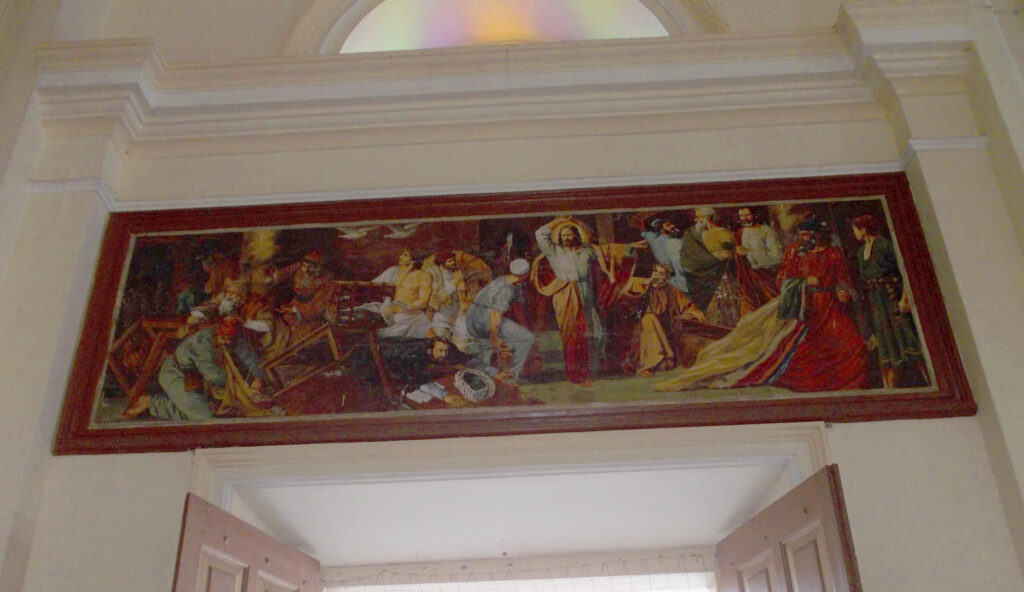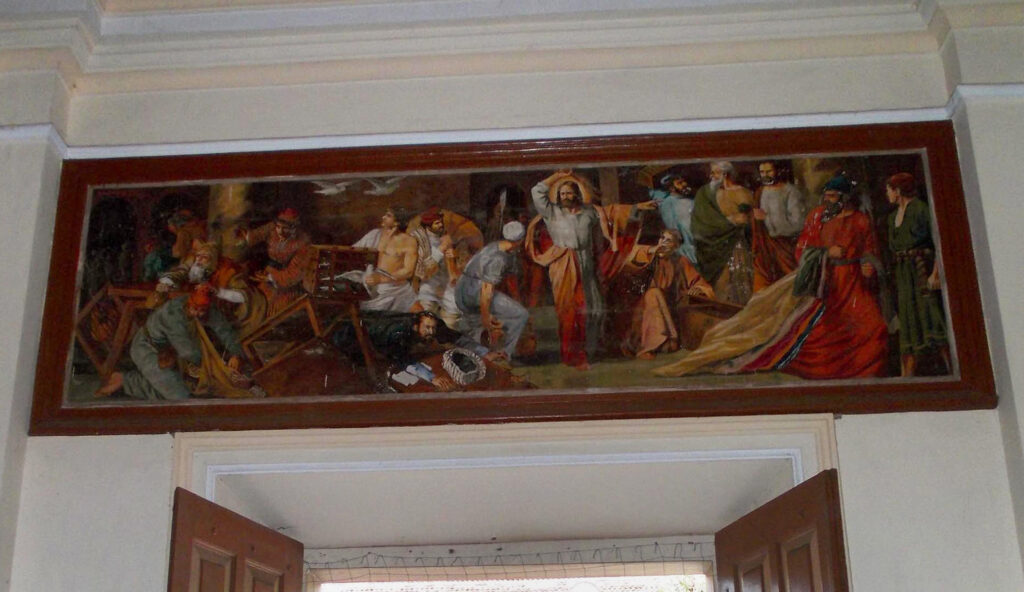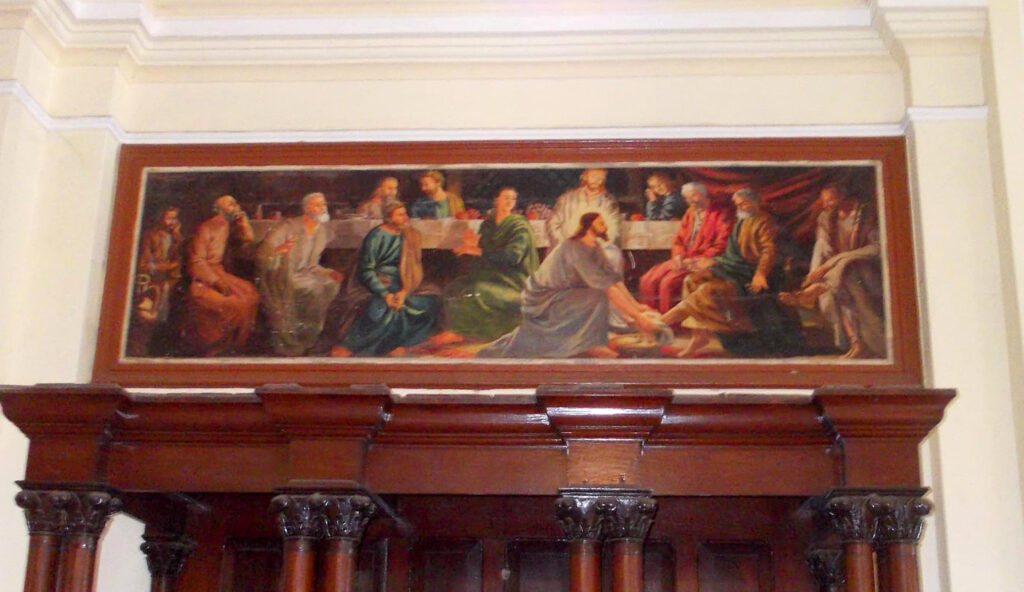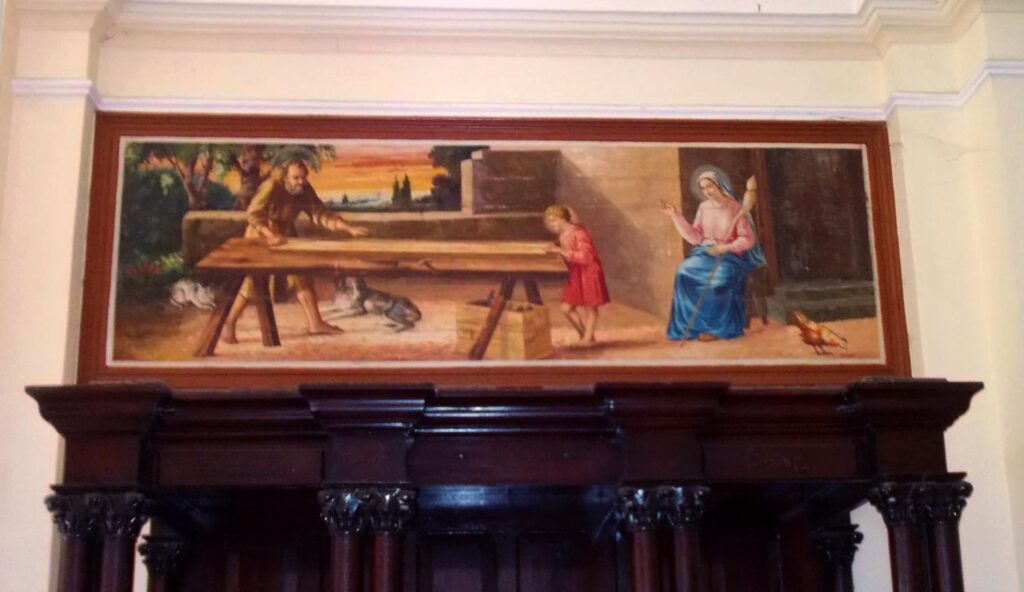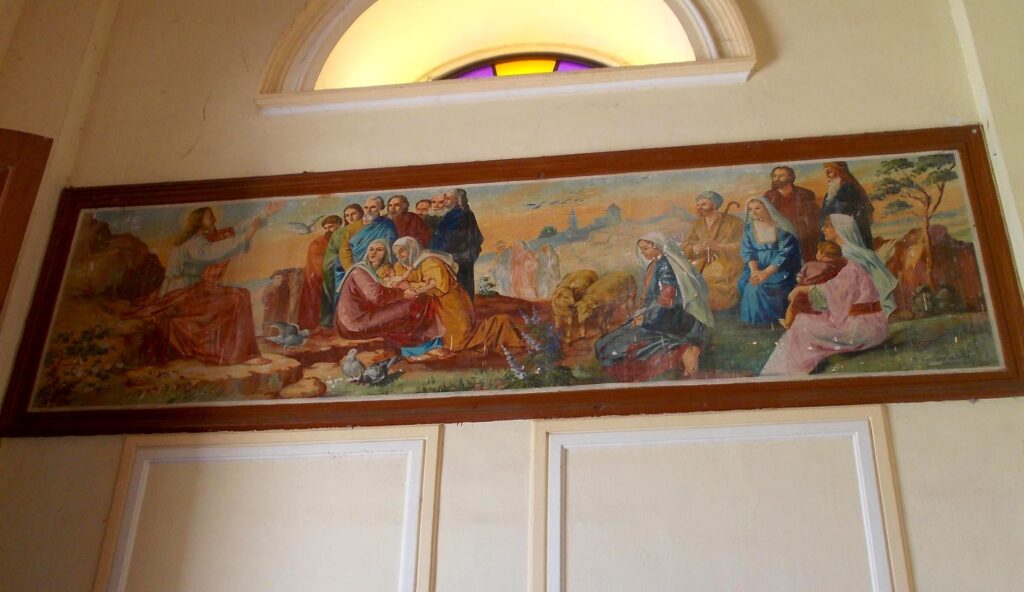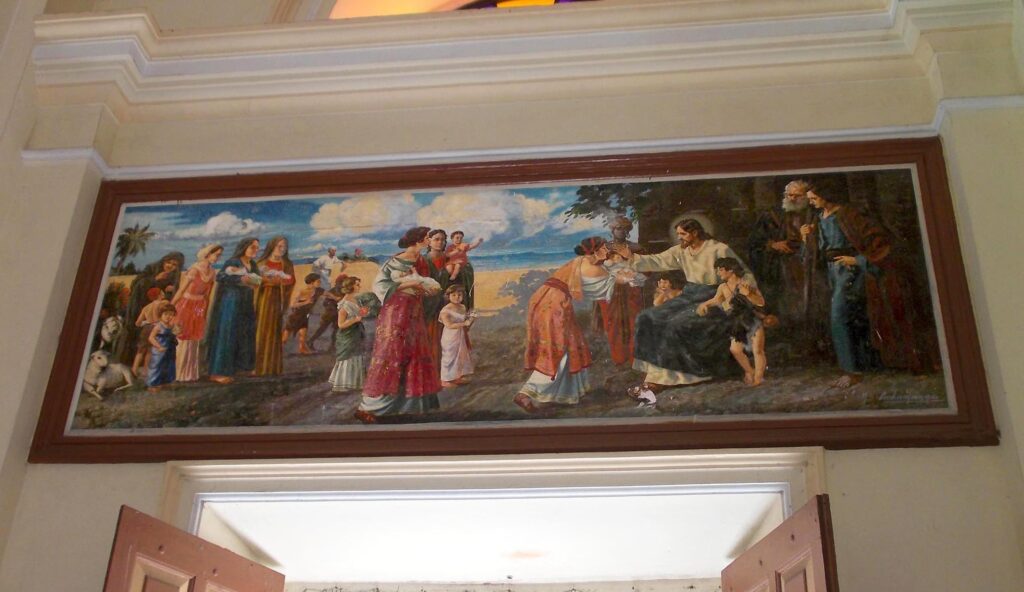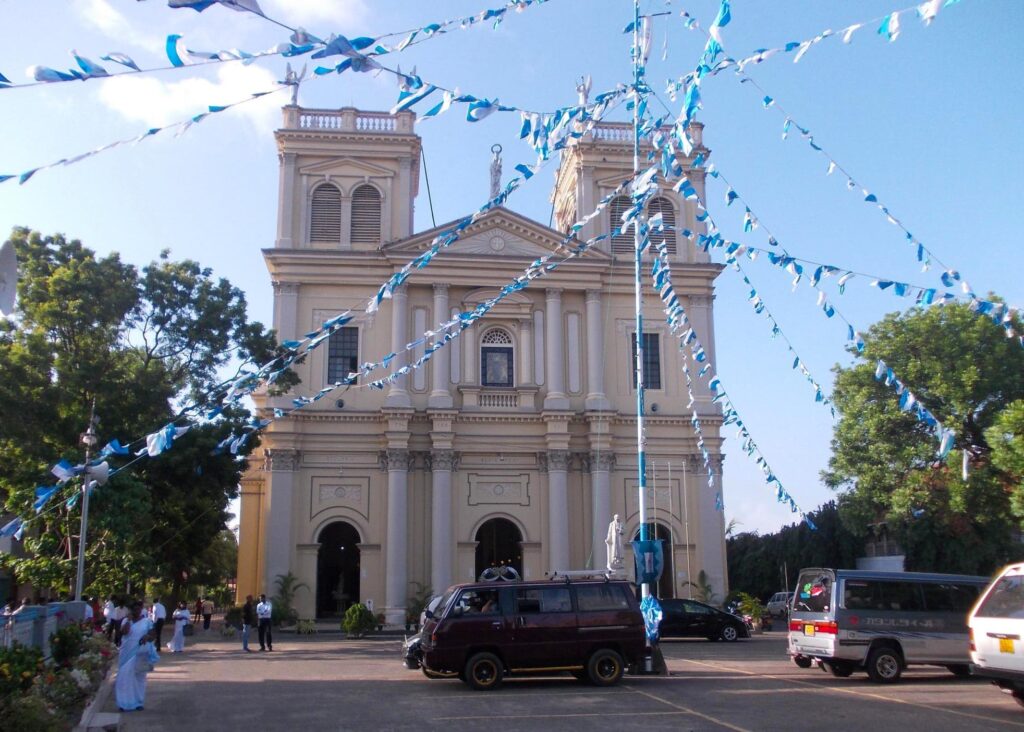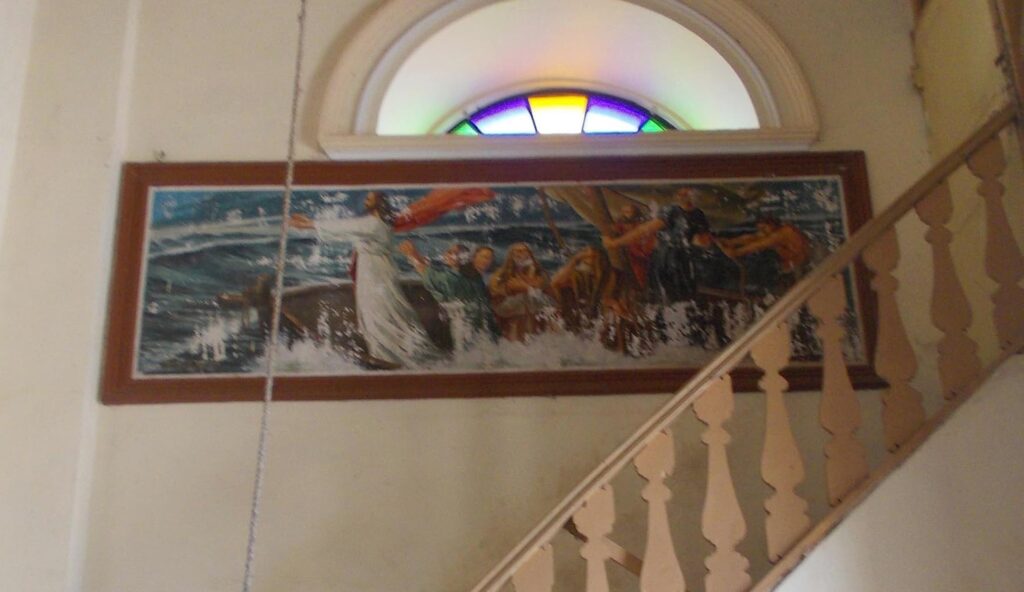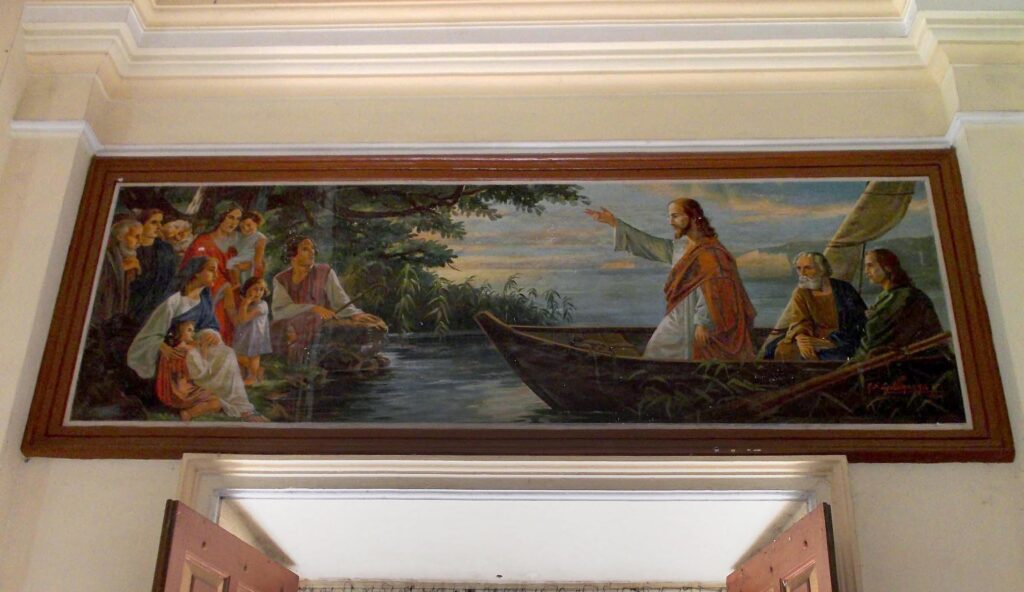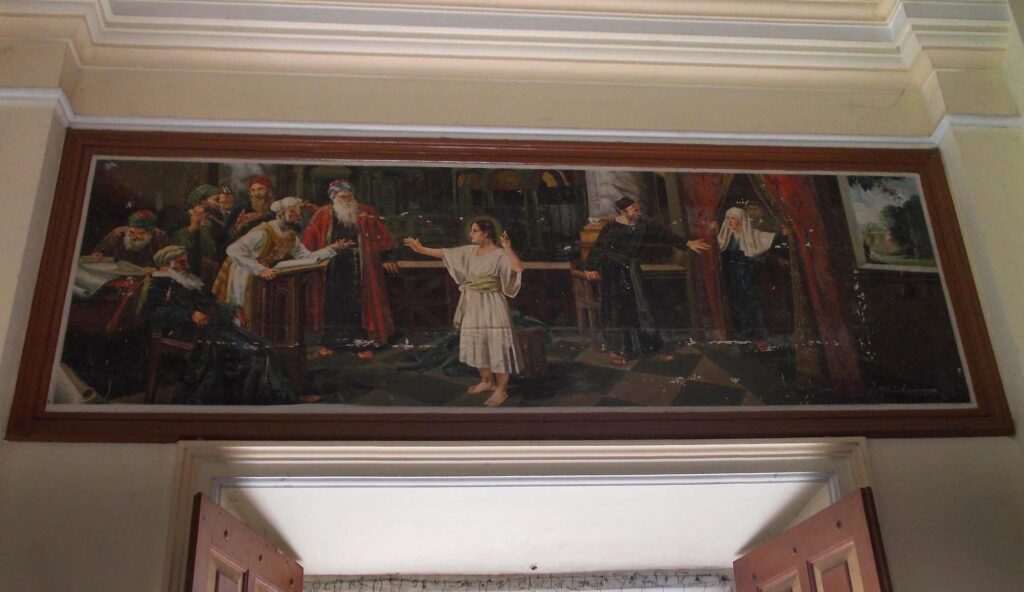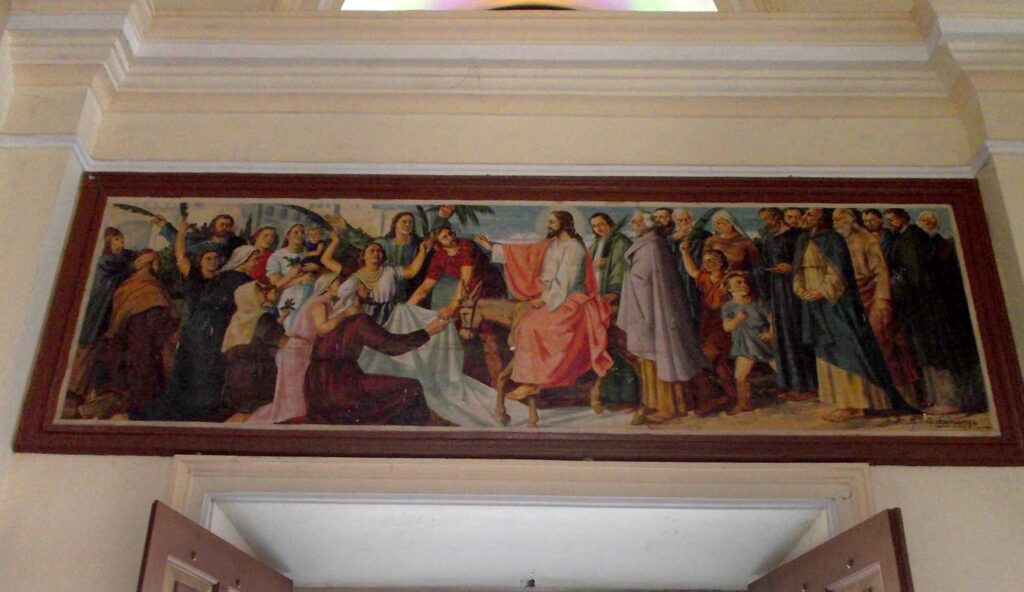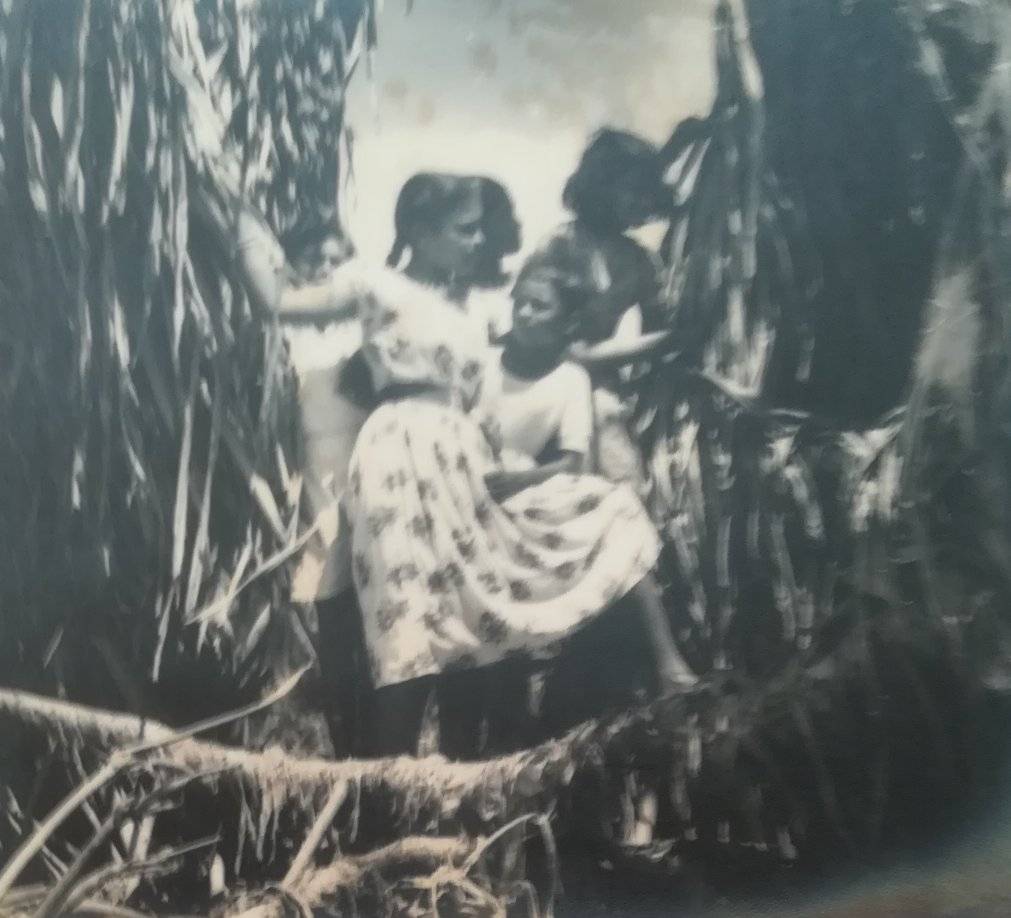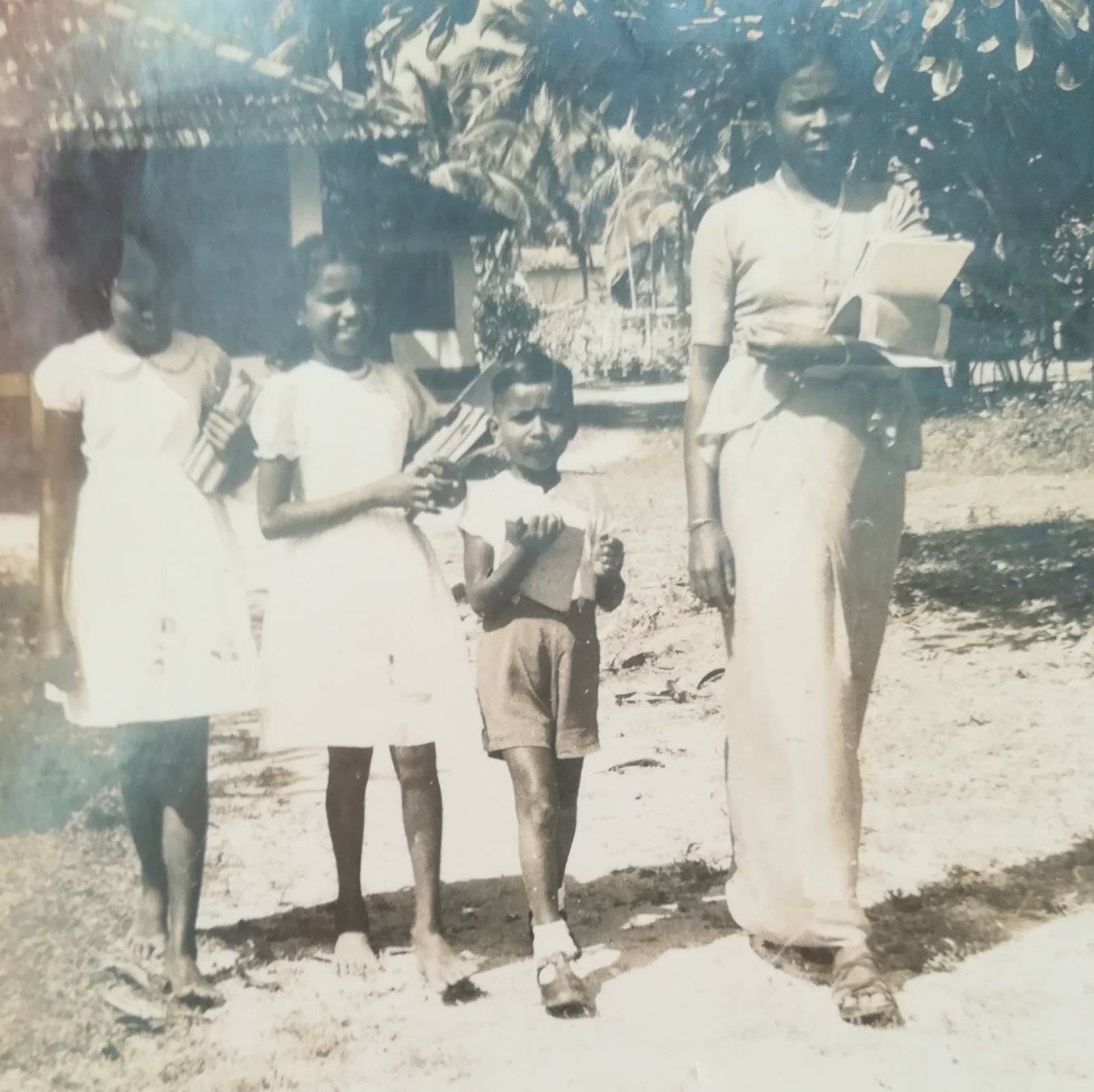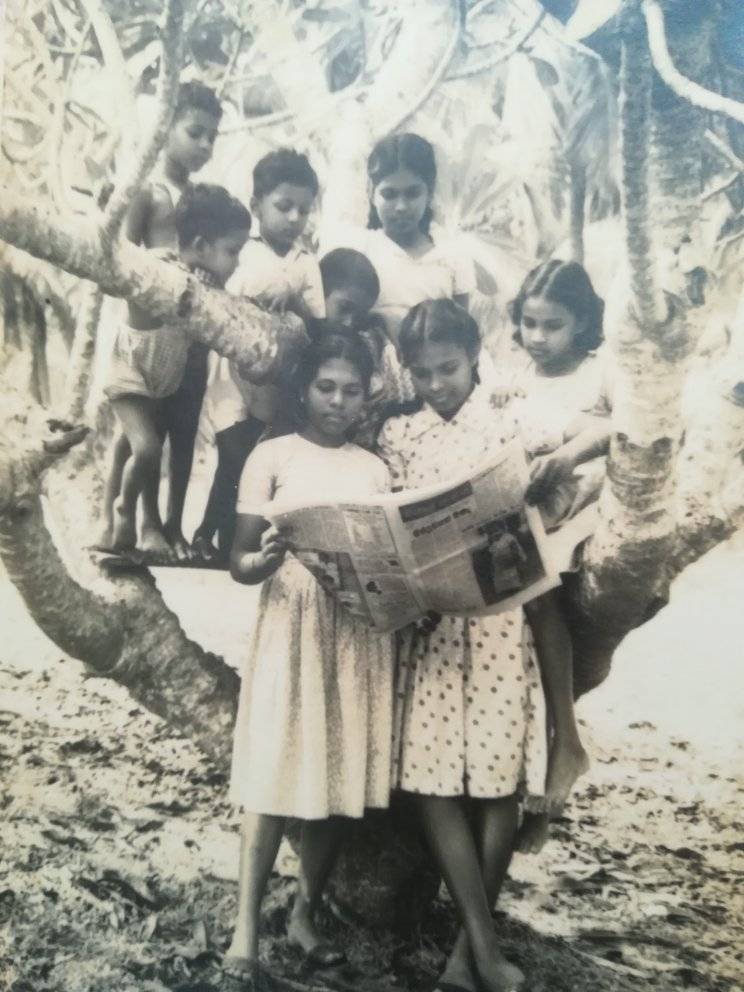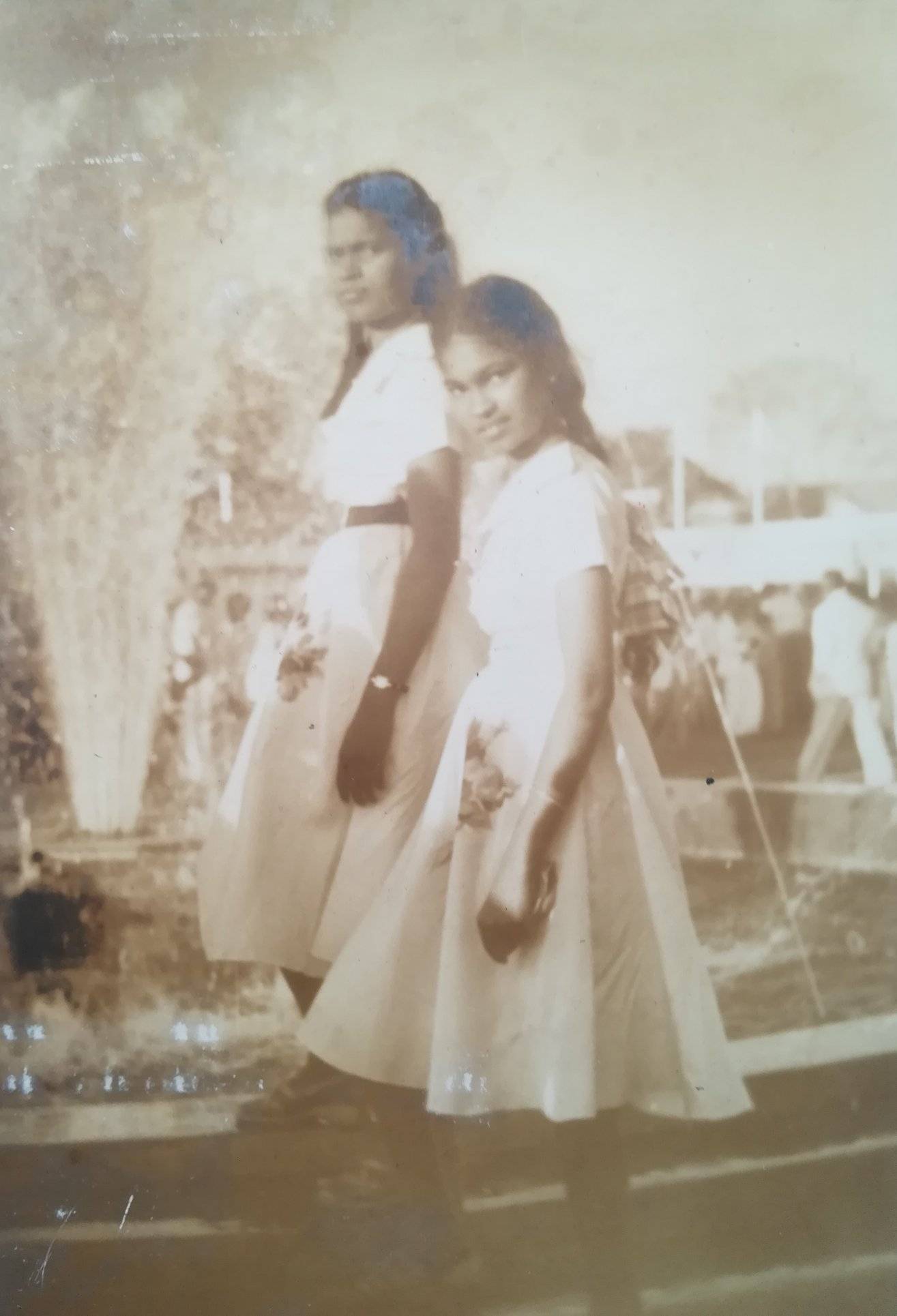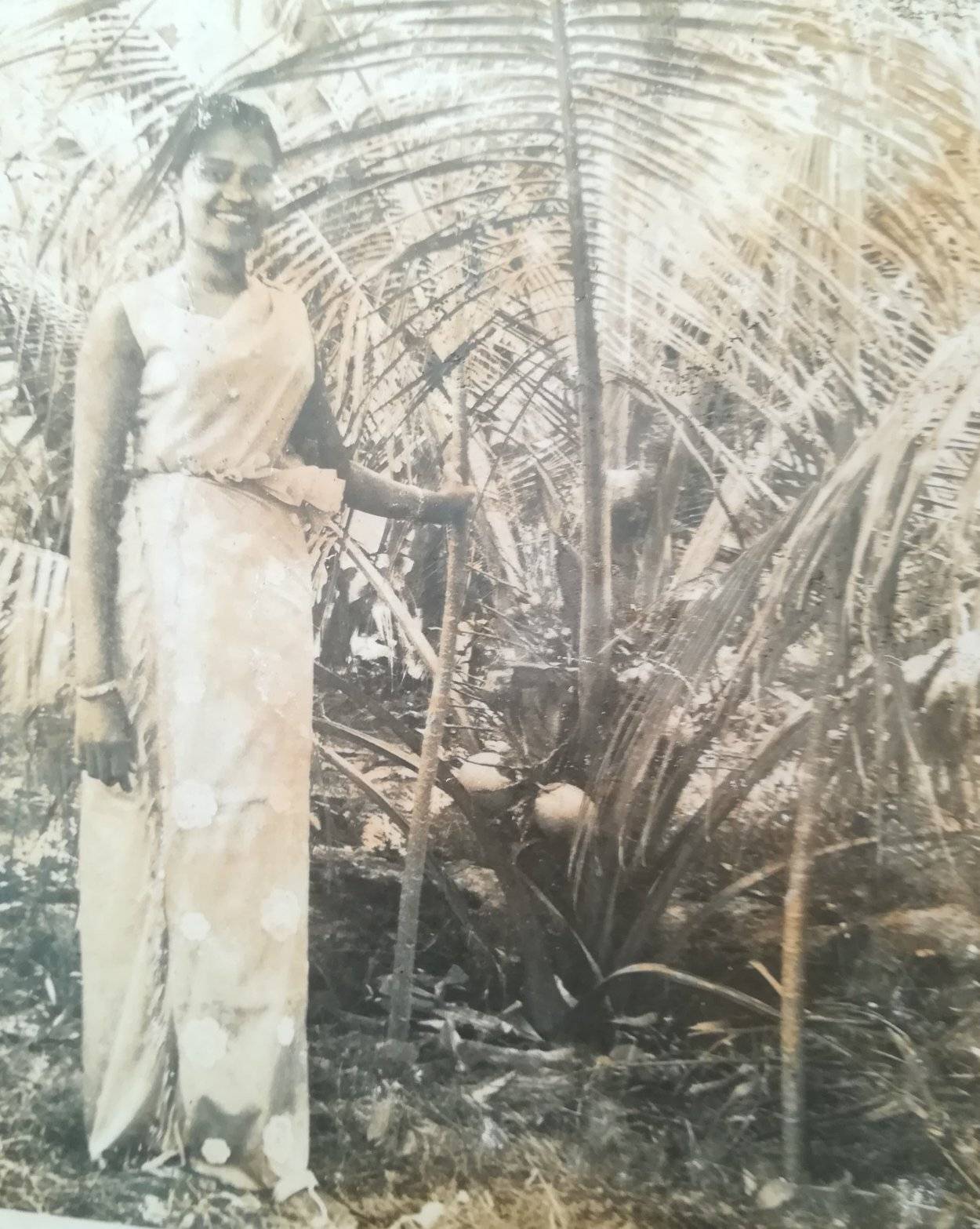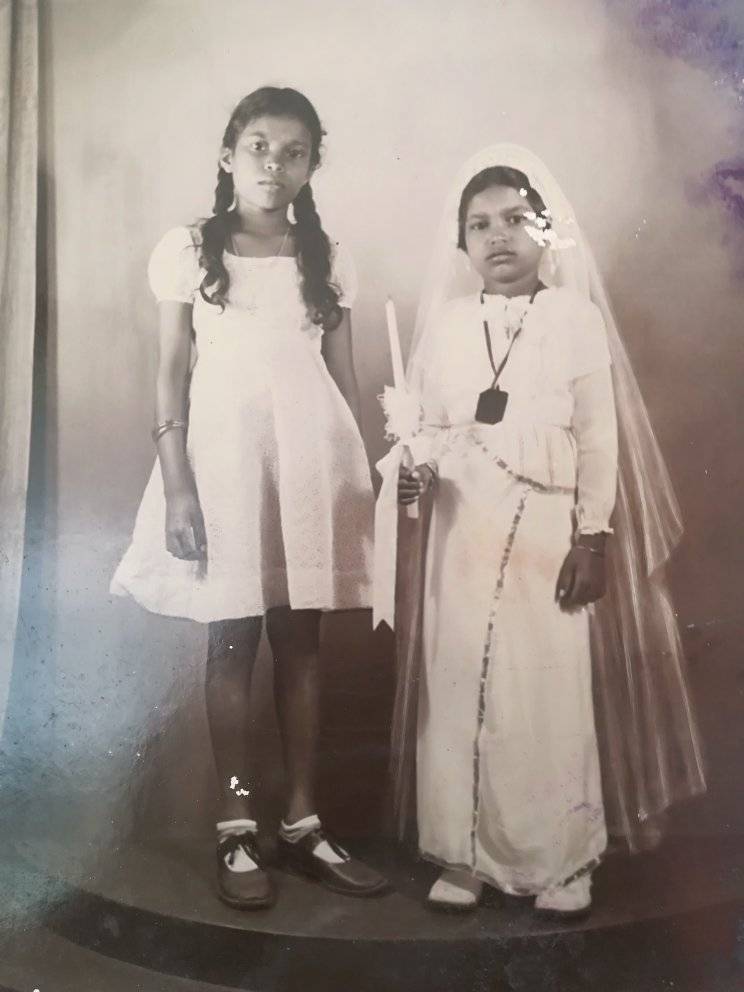Do you know about the legendary & genius artist, sculptor, and photographer who became known as the Michelangelo of Ceylon? It’s none other than Kala Suri Norbert Stephen Godamanna ( N. S. Godamanna ), a man who really brings out the beauty of Jesus in his work.
Born with a natural gift for creativity, Godamanna left an indelible and unparalleled mark on Sri Lankan religious art, especially with his breathtaking ceiling paintings in St. Mary’s Cathedral, Negombo. Whenever I visit St. Mary’s church Negombo, I always see God through his work; it feels like God is watching me. So, let me tell you more about this legend and his work.
Birth and Early Days
Childhood and Family Background
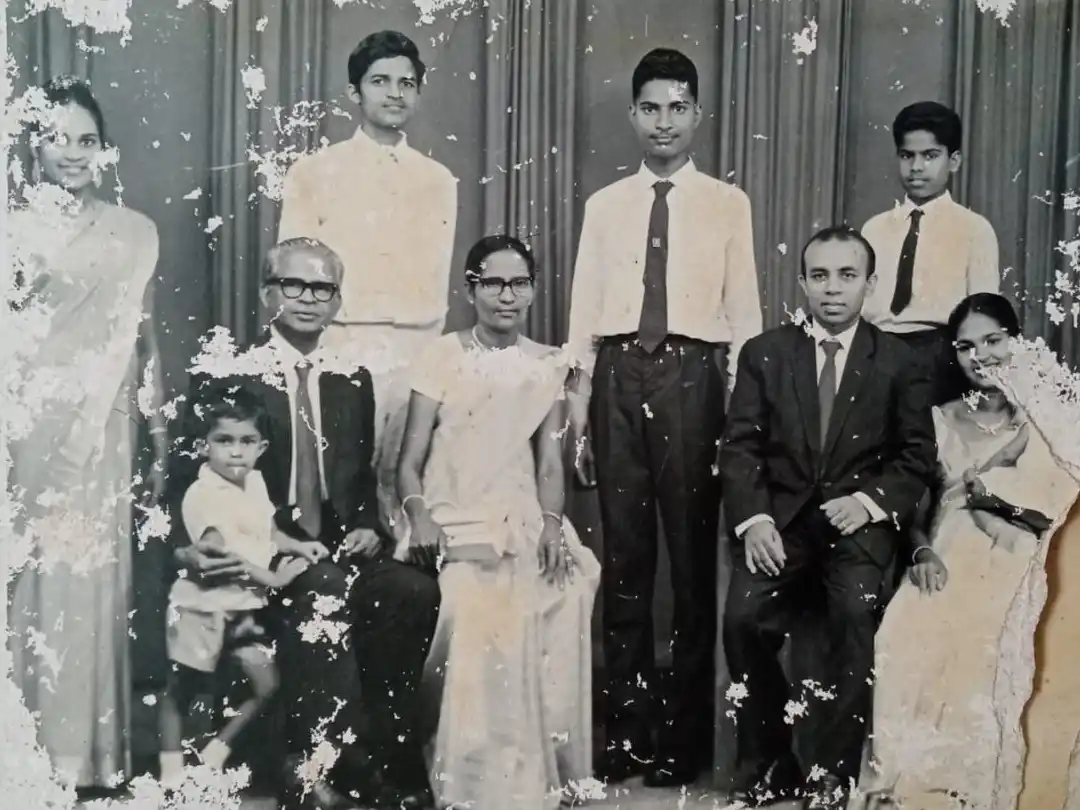
N. S. Godamanna’s family is captured in this photograph from 1968, showcasing a moment of togetherness and familial bonds. – From the Official Facebook Page
Norbert Stephen Godamanna was born on August 25, 1914, in the coastal town of Beruwala to his mother, Mrs. Supaya Godamanna, and father, N.J. Godamanna. Little N. S. Godamanna didn’t know he was destined to do great things.
There’s no doubt Godamanna got his artistic skills from his father, N.J. Godamanna, a well-known and eminent sculptor and painter. He worked on many temples in Malaysia and Singapore.
His father never wanted N.S. Godamanna to become a painter. He wanted him to be a station master. But his destiny was already written for even greater things.
Education and Artistic Training
Godamanna’s artistic journey officially started at Saint Lawrence College in Colombo. (In the early years, the school catered to both boys & girls, but now this is called St. Lawrence’s Convent) His principal, Mr. J.D.P. Perera, recognized the young artist’s raw potential and knew that with the right guidance, Godamanna could develop into something truly special.
Mr. Perera introduced him to J.D.A. Perera, a respected art master who would later become the principal of Heywood College of Art (Later, this became the University of the Visual & Performing Arts). Under his guidance and mentorship, Godamanna started sharpening his skills and becoming an amazing painter.
Godamanna pursued his secondary education at the Maradana College of Technology (formerly Ceylon Technical College), where he specialized in painting and crafting.
The first time he witnessed his work was when he won first prize in the watercolor category for an artwork he did for the 37th Annual Art Exhibition of the Ceylon Technical College in 1931.
In the same year, he went to help his father to create a sculpture for a palace in Singapore, and he further mastered the art of painting in the company of a Chinese artist.
His talent was recognized at the art exhibition organized by the Malaysian Agriculture and Plant Association, where his sculpture of “Wedi Gahaniya” earned him a prestigious bronze medal.
Later, he won a gold medal for his ‘Sculpture’ at the Swadeshi Exhibition held in Calcutta, India.
In 1937, Godamanna won the competition to design the Negombo Municipal Council logo and a diploma in the ‘Let’s Grow More Food’ poster competition held at the national level.
Early Career
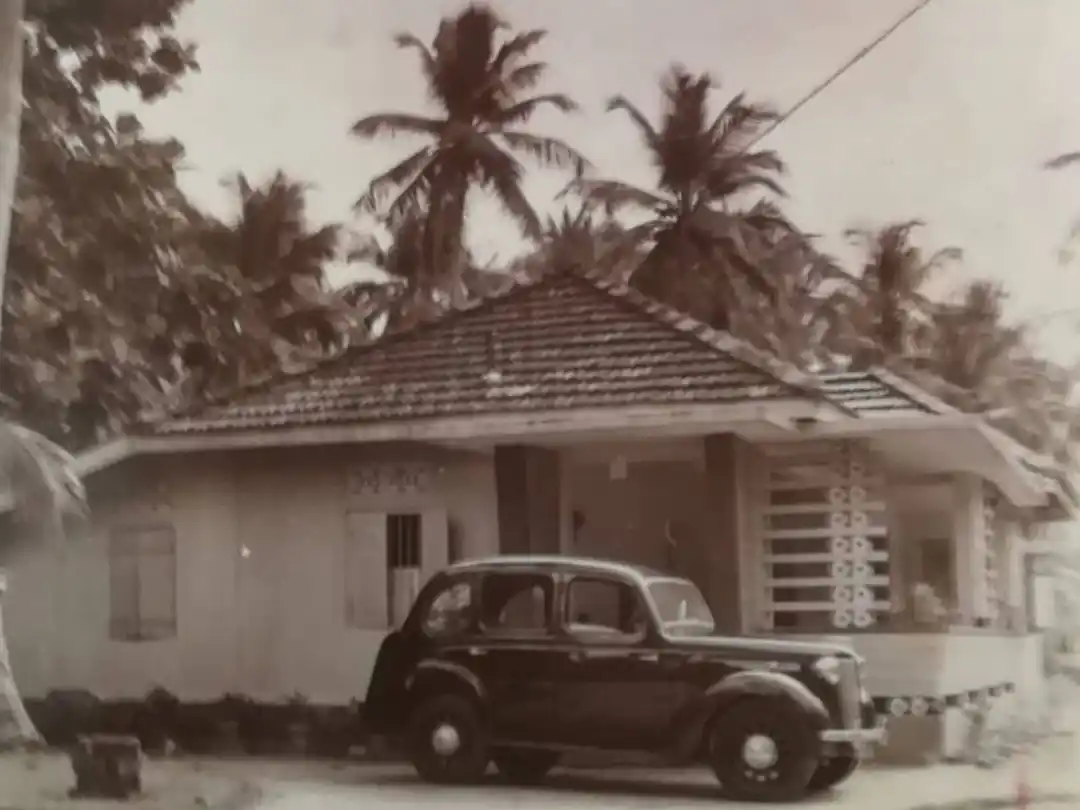
he house where N. S. Godamanna lived and the vehicle he used. – From the Official Facebook Page
After completing his education, Godamanna took his skills to the next level by joining his father in various arts and crafts projects as a helper. This way, he got the most needed practical & professional experience in the art and crafting fields.
His first major step was joining Lake House newspapers as a painter, where he worked on various illustrations and paintings for newspapers. Once, the institution’s management asked him for an excuse for putting the name N.S.G. on the front page picture he had created for a ‘Dinamina’ Vesak issue.
He offered six excuses, but it didn’t work. He said bye to the lakehouse. After that, he was called to work once again, saying that he “can’t give in to money.” He refused the protection and went down the road.
After this, he was very disappointed with the art of painting, he gave up the art of painting and entered into the art of photography and worked for some time in Vince’s studio.
Another special event in his artistic career was the creation of a large-scale three-part model of the Parakramabahu figure and the stone in the background for Mr.J.R Jayawardena’s ‘Colombo Plan’ exhibition. J.R. Jayawardena was the finance minister at that time.
In 1953, he made a significant move by joining the Sinhala Jathiya press as the main illustrator and political cartoonist for the newspapers, contributing his talents to publications like the Sunday Pictorial (later renamed Sunday Mirror) and the Guardian newspaper. After some time, he pioneered the start ‘Mihira’ cinema magazine and worked there for some time.
After these events, Mr. Godamanna became more interested in Catholic church paintings and sculptures. However, he created his first Christian paintings in 1938. Those are the pictures drawn on the ceiling of Pallansena Church in Kochchikade.
Artistic Works
The Turning Point: St. Mary’s Church, Negombo
In 1950, At 36 years old, N. S. Godamanna was assigned the huge task of painting the ceiling of St. Mary’s Church in Negombo by the then Principal Administrator priest of Mahawidya parish, the honorable Sebastian Fernando. – From the Official Facebook Page
This wasn’t just any ordinary project to Godamanna; this was his opportunity to leave his mark on one of the most significant religious sites in the area. Godamanna was dedicated to seeing this project through and had the skills to make it happen.
The ceiling stood 72 feet high, an intimidating height that required skill, dedication, patience, and stamina. Many have compared this project to Michelangelo’s legendary work on the Sistine Chapel in Rome, and not just because his paintings are great.
Godamanna, much like Michelangelo, spent long hours lying on his back 72 feet high on supports and Scaffoldings. It took a year and a half for Godamanna to complete 12 major pieces (size 9 x 4 feet), each depicting key events from Jesus Christ’s life. Around 1949, he created five large paintings measuring 34 x 35 feet on the 72-foot-high shrine’s 72-foot-high ceiling.
According to the Lakbima newspaper article by Mr. Peter Canute Perera, While creating the frescoes in the church, he first smeared cement lime and fine sand mortar on the brick or shell wall plaster.
Then, a mixture of dates was applied to it, and rubber paint was applied in the middle with sandpaper. After it dries well, scaled fine lines are drawn on it and murals are created using oil paints. Then, varnish is applied to it to protect the painting. Paintings were created on the ceiling on a thin plaster spread on the plank.
These are some of the drawings done by Godamanna at the church
- Christ riding on a donkey
- Expelling the merchants from the temple
- The Last Supper
- Birth of Christ
- Jesus’s departure with his parents
- Little Jesus among the scholars
- Jesus with the little children
- Preaching from the boat
- The Sermon on the Mount
- Calming the Tempest
- Scenes like the feeding of five thousand are framed on the upper wall of the cathedral.
In addition to this, on the ceiling of the cathedral, he drew art like
- Creation in Genesis
- Mother Mary calls the soul out of the body to God
- Scenarios such as the appearance of the angel Gabriel to the Virgin Mary have been depicted.
For this project, he was assisted by very talented artists and crafters Henry Dharmasena and Donald Ramanayake. They create such great art that people admire to this day. Not only Sri Lankans but also foreigners and tourists who visit St. Mary’s Church admire these amazing visuals and admire their dedication and craftsmanship towards the arts.
The Art and Techniques of N. S. Godamanna
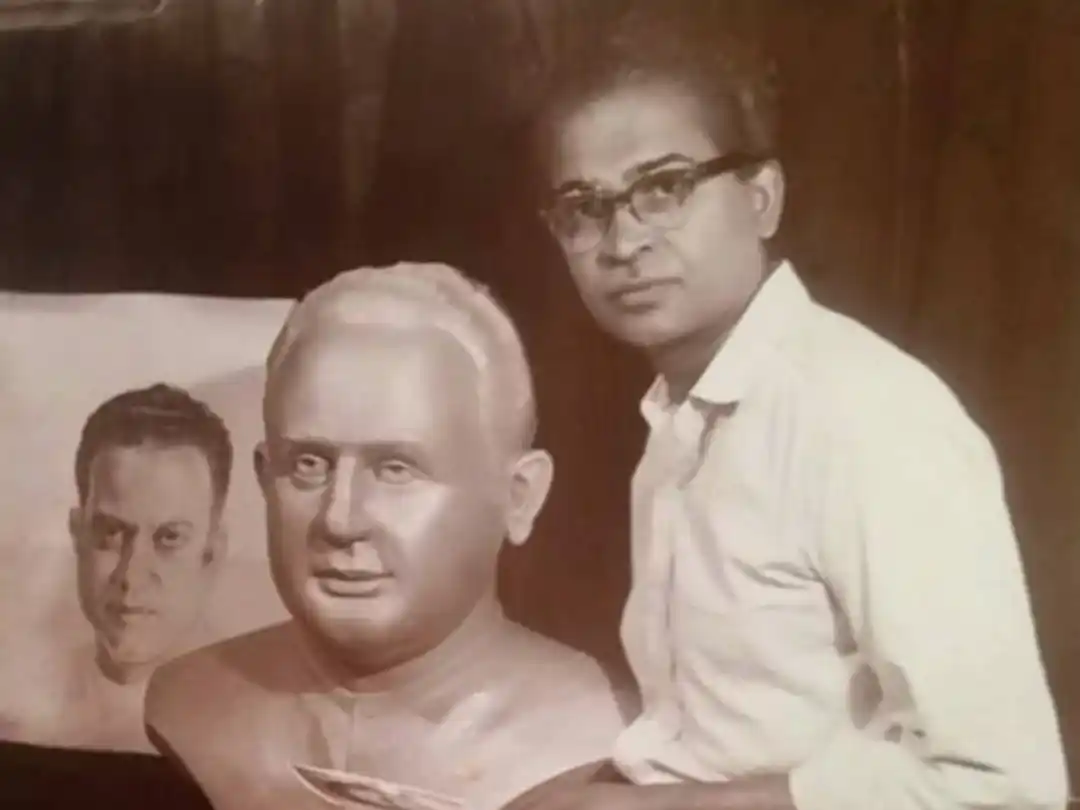
Upper body portrait sculpture of Maithripala Senanayake, with artist N. S. Godamanna standing next to it. – From the Official Facebook Page
For these paintings, Godamanna primarily used oil paints, a medium known for its richness and flexibility. But more than that, Godamanna’s style was heavily influenced by European techniques. He had an incredible understanding of perspective, which allowed him to create paintings that felt three-dimensional. His clever use of color, blending tones to create depth and shadow, made his works feel so lifelike.
While his work on the St. Mary’s Cathedral ceiling was a highlight, Godamanna’s talents didn’t stop there. He also dabbled in sculpture, creating the statue of Our Lady of Holy Purity at Pitipana; beyond that, he contributed artwork to several other churches, including those in Kudapaduwa, Burullapitiya, and Polwatta.
Legacy and Lasting Impact of N.S Goamanna
His intricate work in churches, particularly St. Mary’s Cathedral, earned him the nickname “Little Rome’s Little Michelangelo” by Rupavahini, the national broadcaster.
He didn’t just capture the attention of Sri Lanka, either. Russian-American artist Guy Huzen went even further, calling him the “Michelangelo of Ceylon.”
Despite this recognition, a proposal to name roads in Negombo after him and Rev. Fr. Sebastian Fernando, the man who entrusted him with the ceiling paintings, sadly never materialized at the time I’m writing this article.
In his last years, N.S. Godamanna led a quiet life while operating an art studio at Don’s Beach Tourist Hotel in Negombo. During this time, he created numerous murals and sculptures for various tourist hotels and painted portraits of many foreign visitors.
Although Godamanna was a Buddhist, he did not create Buddhist temple paintings and sculptures as a matter of principle. In an interview, he told Sydney Marcus Dias this was because he was frustrated by the harsh experiences and obstacles he encountered when he once tried to create a model of the Avukana Buddha statue. (Excerpt from the article written by Sidney Marcus Dias in ‘Kalpana’ Magazine, September 1987.)
Godamanna passed away on April 21, 1994, in Kudapaduwa, Negombo, surrounded by his loved ones. Leaving behind an artistic legacy that still feels very much alive.
Although born a Buddhist, Godamanna eventually converted to Roman Catholicism before marrying a Catholic woman from Sea Street, Negombo. Interestingly, the wedding ceremony was led by none other than Rev. Fr. Sebastian, who was serving as the Parish Priest at St. Sebastian’s Church in Sea Street at the time. It’s one of those unexpected twists in his life, connecting his personal faith journey with the religious figures who also played key roles in his artistic career.
Sources
- Siri Dissanayake, Normal and Advanced – Appreciation of Sri Lankan Art Complete Art Lesson Series for Years 9, 10, 11, 12, 13, (Note about artist N.S. Godamanna, page 154).
- Sidney Marcus Dias, Kalpana Magazine, September 1987.
- 125th Jubilee Commemoration of St. Mary’s Church, Negombo High Street (1874 – 1999), Artist N.S. (Note about Mr. Godamanna).
- Daily News, May 23, 2007.
- Daily News Online, dailynews.lk.
- dilangodamanna.wordpress.com
- sundaytimes.lk
- godamanna.blogspot.com
- www.slcw.edu.lk
- Official Facebook Page

